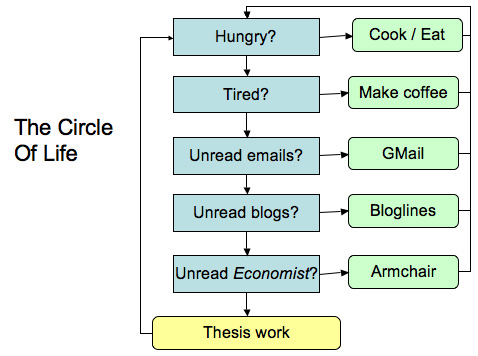Of late, it has become somewhat trendy to consider the environment as a ‘security’ issue. The most frequently cited example is the danger of massive refugee slows caused by environmental factors (such as climate change or desertification). Also common are assertions that people will soon begin fighting wars over natural resources. While massive environmental change can obviously spark conflict, I am skeptical about claims that this constitutes a major change in the character of international security.
To me, the first strain of thinking seems a lot more plausible than the second. There are already island nations that need to think seriously about what the 7-23″ rise in sea levels by 2100 projected in the fourth IPCC report will mean for their habitability. Environmental factors like soil quality and rainfall have helped to determine the patterns of human habitation and production for all of history, and it is unsurprising that changes in such things could have serious disruptive effects. Large scale population movements, both within and between states, are concerning because of the level of suffering they generally involve, as well as the possibility that they will have problematic secondary effects such as inducing conflict or spreading infectious disease.
The idea of resource wars is one that I think has been overstated and, to some extent, misunderstood. There are certainly resources that can and have been fought over, and resource issues frequently play a role in establishing the duration and character of conflicts. Armed groups with no economic base cannot long persist in the costly business of war-fighting. That said, the idea that states will go to war over something like water seems, in most cases, implausible. War is an exceptionally costly enterprise – much more so than new purification or desalination facilities. Also, most water problems arise from irrational patterns of usage, often themselves the product of a distorted cost structure. While equity compels that people should be provided with enough water for personal needs as a standard function of government, it simply makes sense that those using it on a very large scale pay for it at a level that accurately reflects the costs of production. If that happened, we would see a lot more drip-feed irrigation and a lot fewer leaky pipes. Some perspective is also in order: producing all of the world’s municipal water through oceanic desalination would cost only 0.5% of global GDP, and there is no reason to think that such a drastic step will ever be necessary.1
I am not saying that resources and conflict are unrelated: I am saying there is no reason to believe hyperbolic claims about the nature of international security being fundamentally altered by resource issues. It is also worth noting that conflicts over resources are often used as justifications to engage in actions that can be more sensibly explained by considering other causes.
Thinking about the environment as a security issue has implications both for prevention and mitigation behaviours. Because politicians and the general public place a special emphasis on matters of security, spinning the environment that way can be a form of rent seeking. Those who see the need to do more as pressing may find that this kind of resource transfer justifies selling the security side of the environment more than they otherwise would. On the mitigation side, it suggests that dealing with environmental problems may require forceful action to prevent or contain conflicts. Given the aforementioned costs of such actions, the case to take preventative action against probable but uncertain threats becomes even stronger.
[1] Shiklomanov, Igor A. “Appraisal and assessment of world water resources.” Water International. 25(1): 11-32. 2000
PS. People interested in the hydrosphere may enjoy reading the accessible and informative chapter on it in John McNeill’s Something New Under the Sun. this report from SOAS on water and the Arab-Israeli Conflict also makes some good points.

